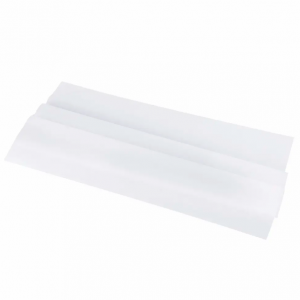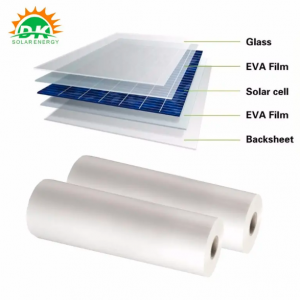As the world continues to seek sustainable and renewable energy, solar energy has become a major competitor in the race to reduce carbon emissions and combat climate change. At the heart of a solar system is ethylene vinyl acetate (EVA) film, which plays a key role in the efficiency and durability of solar panels.
EVA film is a transparent thermoplastic copolymer widely used in the packaging of photovoltaic modules. Its main function is to protect fragile solar cells from environmental factors such as moisture, dust and mechanical stress, while ensuring efficient transmission of sunlight to the solar cells. This dual role makes EVA films an indispensable component in the production of high-quality solar panels.
One of the main benefits of EVA films is their ability to increase the performance and longevity of solar panels. By effectively encapsulating solar cells, EVA films act as a barrier to moisture ingress, preventing corrosion and electrical failures that can reduce the efficiency of the panels. In addition, the high light transmittance of EVA films allows for maximum sunlight penetration, thereby optimizing the energy conversion process within the solar cell.
In addition, EVA films play a vital role in the mechanical stability of solar panels. Its strong adhesive properties ensure that solar cells are firmly bonded to panels even under harsh environmental conditions such as extreme temperatures and wind loads. This not only increases the durability of the panels but also contributes to their long-term reliability, making them a sustainable investment in renewable energy systems.
In addition to its protective and structural functions, EVA films help improve the overall cost-effectiveness of solar systems. Its compatibility with a variety of solar cell technologies and manufacturing processes makes it a versatile and economical choice for solar panel encapsulation. Furthermore, the use of EVA films allows the production of lightweight and flexible solar panels, providing opportunities for innovative and space-saving solar installations.
The environmental impact of EVA films in solar systems is also worth noting. By protecting solar cells and extending the life of solar panels, EVA film helps maximize energy output over the long term, reducing the need for frequent replacement and minimizing waste. This is consistent with the Renewable Energy Initiative's sustainability goals and highlights the importance of EVA films in driving the transition to clean energy.
Going forward, ongoing research and development in the field of solar EVA films is focused on further improving their performance characteristics, such as UV resistance, thermal stability and recyclability. These advancements are designed to increase the efficiency and sustainability of solar panels, ultimately contributing to the widespread adoption of solar energy as a viable alternative to traditional fossil fuels.
In summary, the role of solar EVA films in renewable energy systems cannot be overstated. Its multifaceted contributions to solar panel protection, efficiency and cost-effectiveness make it an important part of the advancement of solar technology. As the global demand for clean and sustainable energy continues to grow, EVA films are becoming increasingly important in promoting the widespread deployment of solar energy, paving the way for a brighter and more sustainable future.
Post time: Mar-29-2024


